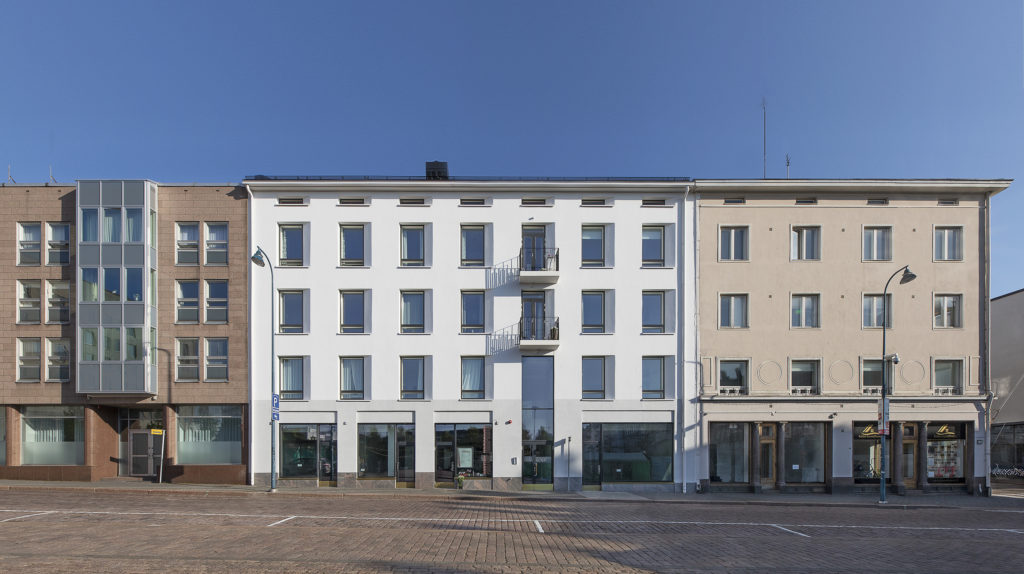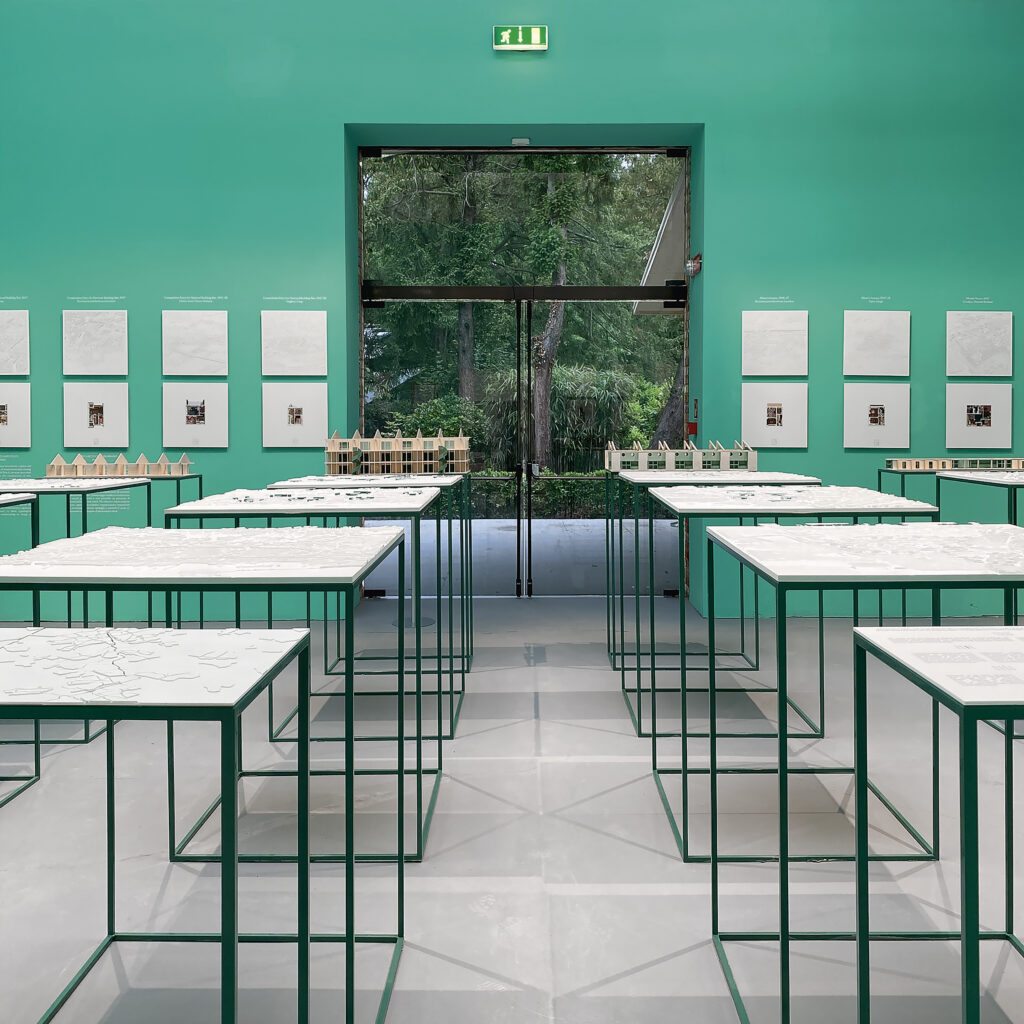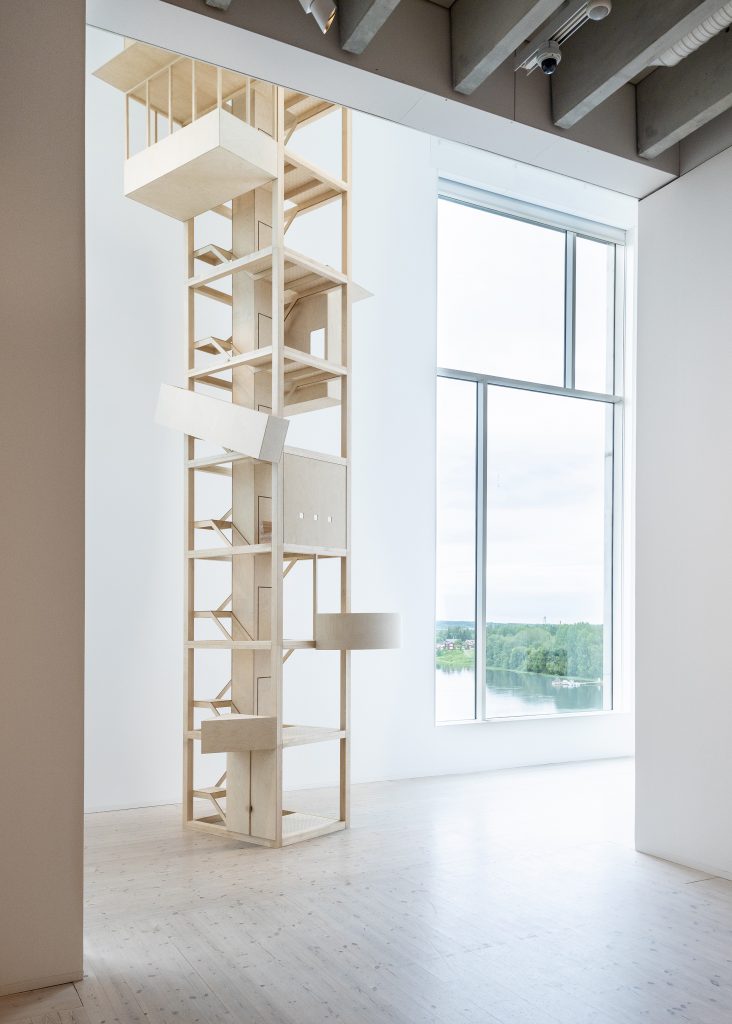Closing Borders
There is only a handful of buildings designed by foreign architects in Finland since the country achieved independence. On the other hand, Finland has also lagged behind its neighbours in the area of exporting design know-how.
Border security, trade barriers, security of supply. Within a few years, the conceptualisation of political debate has become ruthless. Only recently it seemed that international cooperation, free movement, and cultural diversity were values shared by almost everyone, but now politicians around the world are competing to build the highest walls to stop migration or protect domestic industry. Crossing borders is becoming more and more difficult for people, goods and even ideas.
All of this inevitably has an impact on the making of architecture as well. In the construction industry, state borders have been difficult to cross in any case. When the EU’s internal market was created a few decades ago, people imagined – or feared – that architectural design would also open up to international competition. National regulations, business practices and cultural differences nevertheless turned out to be stronger than imagined, and it is unlikely that even artificial intelligence will bring substantial changes to this.
Finland has been considered a particularly closed market for a reason. If we forget the embassies built by foreign states, there is only a handful of buildings designed by foreign architects to be found here since Finland achieved independence. In this respect, our country was significantly more open to international influences at the end of the 19th century, when it was not at all unusual to order drawings for a church, theatre or town hall from Stockholm or St. Petersburg, or plans for a factory building from England. In addition, the Russian army had its own design team for a wide range of construction tasks.
Recently, of course, the situation has changed somewhat, and foreign practises are readily sought out for visions and concepts, for both urban planning and individual buildings. The path from a bold idea to a built environment is still often very rocky, and many great plans have remained on the drawing board. Even when construction has been completed, as in the case of the Tripla Complex or Telakkaranta Area in Helsinki, the implementation has often been done entirely by domestic parties. In this case, something essential is missing from the end product, no matter how experienced and professional the local architects are. Sometimes it even seems that all that is wanted from foreign practises are concepts to sell to decision-makers, after which the project is implemented by familiar parties. In these processes, Finnish actors could learn a lot a lot from other Nordic countries, where cooperation with foreign architectural firms is already commonplace.
Has building a country brand on Alvar Aalto and Eliel Saarinen prevented our contemporary architecture from being profiled as an interesting phenomenon?
Finland has also lagged behind its neighbours in the area of exporting design know-how. While Danish architectural offices receive almost 15 percent of their income from abroad, the share in Finland is a fraction of this. The articles in this issue of the Finnish Architectural Review examine the reasons for this from several perspectives. Among other things, the small size of architectural offices, the increasing international competition, the excessive pragmatism of architectural education, and the lack of innovation of the construction industry come to the fore. And has building a country brand based on the classics of the last century, especially Alvar Aalto and Eliel Saarinen, already turned against itself and prevented our contemporary architecture from being profiled as an interesting phenomenon?
The international competitiveness of architecture also involves the utilization of foreign expertise. Currently, foreign students in abundance are admitted to the master’s programmes of our schools of architecture, but the investments are largely wasted when the graduates do not integrate into Finnish working life. Nor does the current government’s short-sighted immigration policy make Finland any more attractive to foreign experts. We asked four foreign architects who moved to Finland how, in their opinion, the barriers to integration could best be overcome.
The projects presented in this issue represent different ways of making boundary-transcending design. The Meander apartment building in Helsinki is a rare synthesis of the vision of an international big-name architect – once again, Steven Holl – and the practices of Finnish housing production. At the same time, it testifies to the old saying that architecture is an endurance discipline – the project took no less than 18 years to complete, but the architects managed to stick to their original idea. The Nanchang Poly Grand Theatre is already the third opera house completed by PES Architects in China, and among Finnish architecture offices it has been extremely successful in the East Asian market. The architecture and planning consultancy Helsinkizurich, which operates from both Finland and Switzerland, has complemented a protected church building in Zurich with a restrained annex, and the Catalan-Finnish architectural firm Bach has thoroughly renovated an early 20th-century apartment building in its home city of Barcelona. ↙




